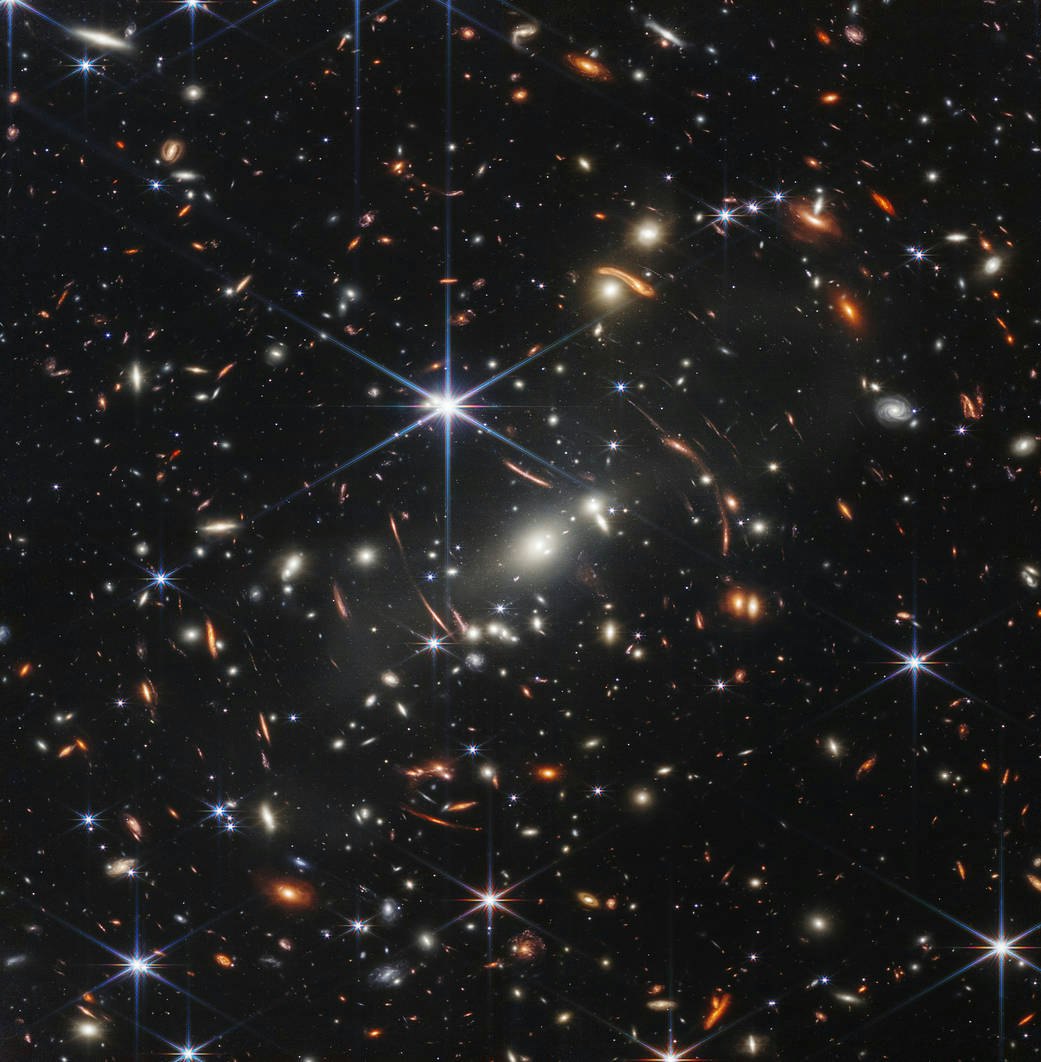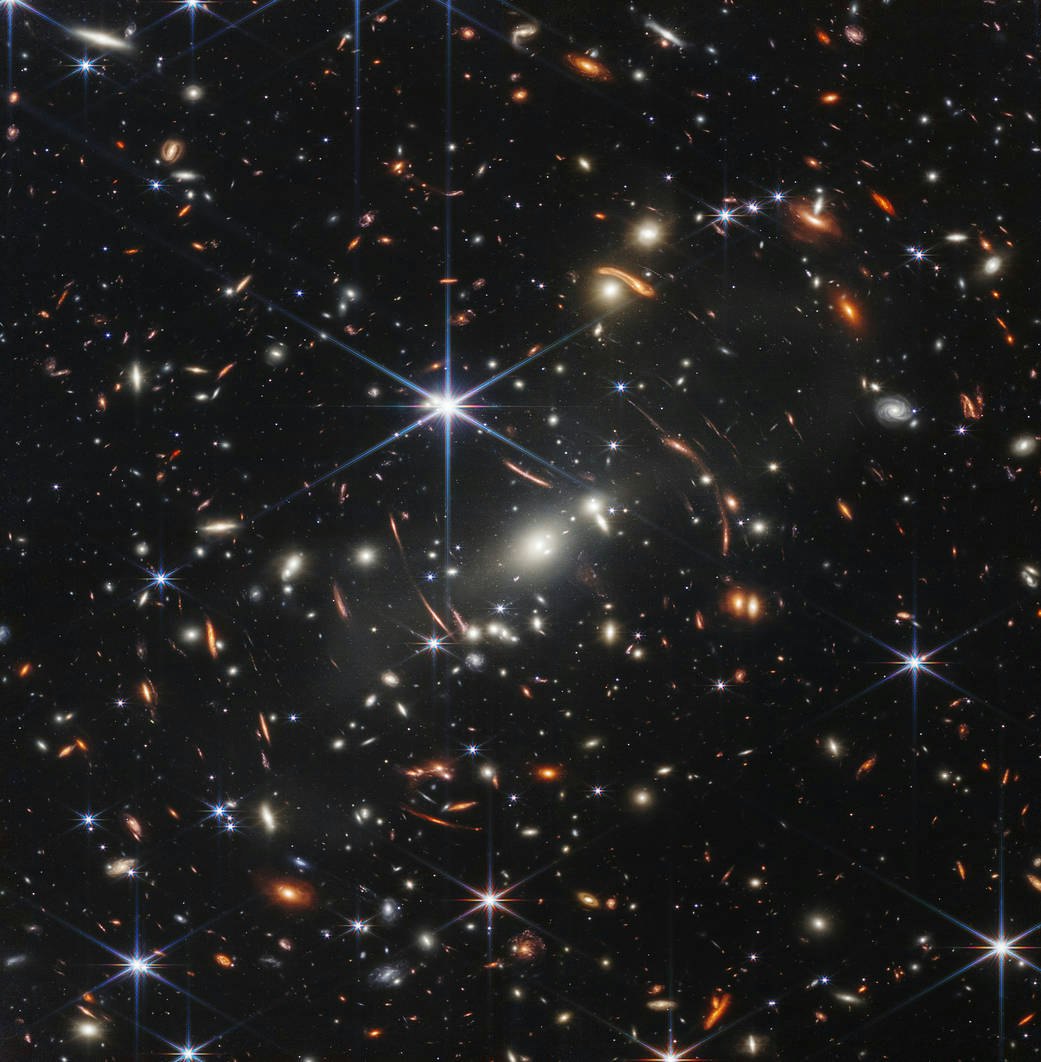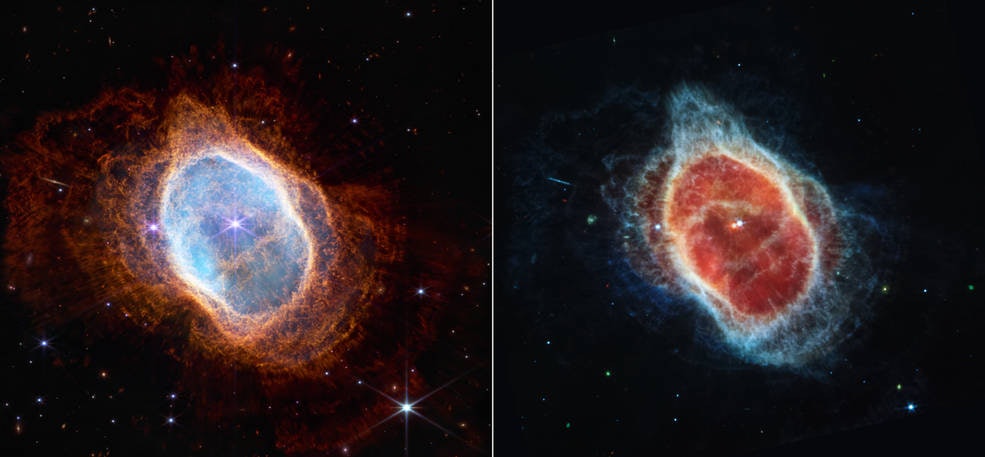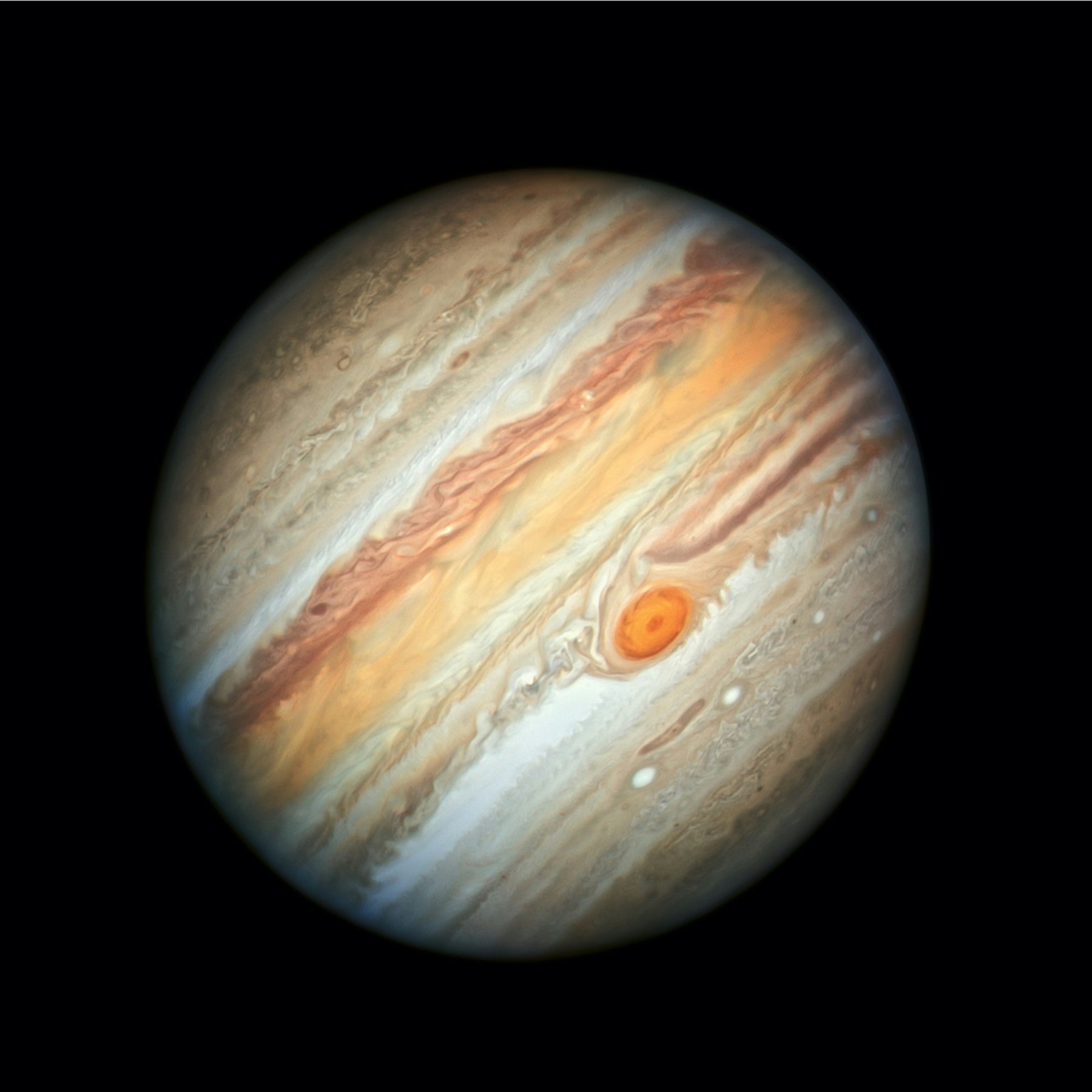
How much is a picture worth?
Regardless of what you think about space, NASA, or indeed science in general, today is a day that will go down in history. Today, July 12, NASA and its scientific partners released the first batch of scientific images captured by the James Webb Space Telescope. These five images cost $10 billion, decades of work, a million miles of distance from Earth, and untold degrees of brain power to produce.
This is an adapted version of the Inverse Daily newsletter for Tuesday, July 12, 2022. Subscribe for free and learn something new every day.
“This gives a new meaning to as far as the eye can see,” said Steny Hoyer, a U.S. senator from Maryland. True! And we’re here to explain what, exactly, we are looking at — now, and with every new release by the Webb scientists.

NASA unveils the Webb telescope’s first image — from the edge of time
The wait is over. President Joe Biden unveiled the first Webb deep-field image Monday along with NASA chief Bill Nelson at a press conference. It offers a look deep into a patch of sky that, when viewed from Earth, is as tiny as a grain of sand held at arm’s length.
And this image of one tiny speck of sky reveals thousands of newly-discovered galaxies whose light was too faint for previous telescopes to detect. They’re among the oldest and most distant objects in our universe, and studying them (and other galaxies like them) in more detail will be a crucial part of the Webb Telescope’s science mission.
This is the deepest and sharpest infrared view of the distant Universe ever captured.

James Webb Space Telescope Easter eggs: A hidden star and a galactic surprise
Think of this as the bonus Easter egg moment in your favorite show, if your favorite show is a week of new astronomical discoveries that change space science forever.
The image above shows a planetary nebula — the remains of a dying star. Or stars, to be more exact. Bonus points if you can spot the side-on galaxy in the top left of the image.
This, for comparison, is the Hubble image of the same star:

Here’s what NASA has to say about the Webb images:
Two stars, which are locked in a tight orbit, shape the local landscape. Webb’s infrared images feature new details in this complex system. The stars – and their layers of light – are prominent in the image from Webb’s Near-Infrared Camera (NIRCam) on the left, while the image from Webb’s Mid-Infrared Instrument (MIRI) on the right shows for the first time that the second star is surrounded by dust. The brighter star is in an earlier stage of its stellar evolution and will probably eject its own planetary nebula in the future.
In the meantime, the brighter star influences the nebula’s appearance. As the pair continues to orbit one another, they “stir the pot” of gas and dust, causing asymmetrical patterns.
Stay up-to-date on the latest science discoveries by the James Webb Space Telescope with Inverse! you can follow along on our social media channels and on the site.
What’s next for Webb?
Does Alpha Centauri have habitable zone planets? Webb could settle the debate
Alpha Centauri A is just 4.4 light-years away, and astronomers have studied it thoroughly over the years — but if there’s a planet orbiting the nearby star, no telescope on Earth or in space has found a trace of it yet.
Astronomers have previously measured how much Alpha Centauri A wobbles, which could reveal the gravitational tug of a planet orbiting the star. And those measurements say there can’t be a very large exoplanet — anything mass of Saturn or larger — within about three astronomical units (an astronomical unit, or AU, is the average distance between Earth and the Sun). There may be no planets there at all.
Jet Propulsion Laboratory astronomer Charles Beichman and his team are about to take a chance on a long-shot search for an exoplanet orbiting one of our closest stellar neighbors.
So Beichman and his colleagues plan to look for something other searches may have missed: an exoplanet small enough to evade detection by radial velocity measurements, but just barely large enough to (hopefully) show up on Webb’s instruments.

THE WEBB TELESCOPE WILL REVEAL JUPITER AND ITS ICY MOONS IN STUNNING DETAIL
Some of the first heavy-hitting science from the James Webb Space Telescope will come from our cosmic backyard.
As part of the Director’s Discretionary Early Release Science Program — an initial round of studies carefully chosen to help scientists test Webb’s capabilities — University of California, Berkeley planetary scientist Imke de Pater and her team will use Webb to study Jupiter.
Our Solar System’s largest planet and its complex menagerie of moons and rings present some fascinating scientific targets for Webb. Along the way, the team will explore the limits of Webb’s abilities and find the best ways to use the telescope to study our own Solar System, which comes with a unique set of challenges for a telescope built to look 13 billion years into the past.
Webb will spend about 33 hours this summer observing Jupiter, its rings, and two of its most interesting moons: icy Ganymede and volcanic hellscape Io.

About this newsletter: Do you think it can be improved? Have a story idea? Want to share a story about the time you met an astronaut? Send those thoughts and more to newsletter@inverse.com.
- On this day in history: On July 12 — today. We all witnessed history. That’s it.
- Song of the day: “Galaxy Song,” by Monty Python.







